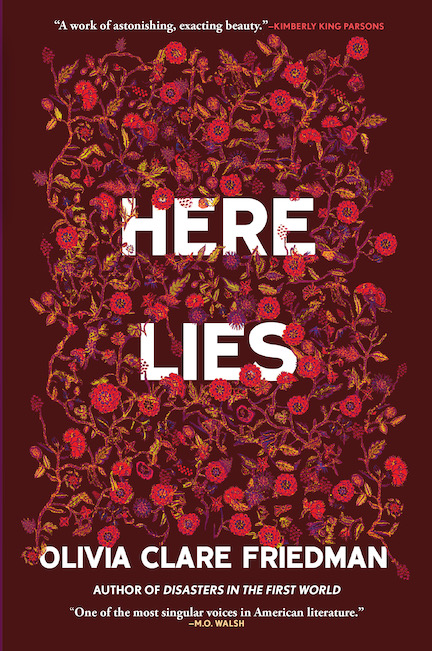Creatures of the Underworld
Michael Farris Smith’s Blackwood depicts small-town Mississippi as a forest of evil
Outside of Red Bluff, Mississippi, a valley covered in kudzu hides a century’s worth of dark secrets. After the town’s long slide into economic annihilation, the remaining residents hack away at the thick vines perpetually encroaching on their homes, but a creeping miasma of misery threatens to engulf the community. In this grim setting, the characters in Michael Farris Smith’s fifth novel, Blackwood, use machetes to clear new paths into the woods only to discover unimaginable depths of horror.
Smith’s gaze lingers on shadows, avoiding sunlight like a vampire bat. The view Smith offers of the kudzu is not just from above, a green blanket covering the contours of rural Mississippi, but also from below, where the dense umbrella of leaves creates an underworld ruled by malice. Smith describes the invasive plants as holding dominion over the land. “Small thickets of forest had been conquered decades before, the vines climbing to the highest points and reaching out to the farthest limbs, intertwined and forming slumping canopies,” Smith writes. “Crippled trees and gathered brush provided mounds and humps across the valley and down below this stretching canvas of green was the blackwood where creatures crawled and sunlight fought through pecks of space between the leaves.”
Into this ominous scene two strangers arrive. Colburn Evans lived in Red Bluff as child until his father’s suicide — gruesomely narrated in the opening pages — led to his flight from town with his mother. Two decades later, Colburn returns to set up shop as an “industrial sculptor,” repurposing factory castoffs and rusted car parts as welded works of art. His true intention, as Main Street old timers immediately perceive, is to make peace with the ghost of his father.
The other new arrival has no name and no connection to Red Bluff, his presence due solely to his old Cadillac finally breaking down within the city limits. Sheriff Myer knows trouble when he sees it, but his efforts to sweep the vagrant and his companions (apparently a wife and son) out of town serve only to provoke the man to linger on the outskirts. This vagabond family feels loyalty to nothing and no one. The valley’s blackwood offers them a perverse Eden, a garden of evil where humankind descends to its feral essence.
Against this malignant background, Smith offers the brightness of a budding romance. When Colburn starts dating Celia, owner of the town’s only bar, he begins to see faint glimmers of hope. But Celia struggles with demons of her own, notably memories of her mother, a fortuneteller with a connection to Colburn’s father. Colburn asks Celia to leave Red Bluff with him, to start fresh somewhere else, and for a moment readers envision the possibility of renewal.
 Blackwood depicts a half-dozen varieties of bad parenting, from casual neglect to bloody violence that swells to Old Testament levels. As a child, Colburn craves his father’s attention; after his father’s death, Colburn’s mother loses the capacity to care for her son. The homeless man, burrowing into the dark woods, turns on his family with primeval ferocity, a godless Abraham willing to sacrifice kin to satisfy his infernal urges. When the narrator describes an infertile couple in town, the primary emotion they inspire is relief — that means one less broken child in this unforgiving world.
Blackwood depicts a half-dozen varieties of bad parenting, from casual neglect to bloody violence that swells to Old Testament levels. As a child, Colburn craves his father’s attention; after his father’s death, Colburn’s mother loses the capacity to care for her son. The homeless man, burrowing into the dark woods, turns on his family with primeval ferocity, a godless Abraham willing to sacrifice kin to satisfy his infernal urges. When the narrator describes an infertile couple in town, the primary emotion they inspire is relief — that means one less broken child in this unforgiving world.
Smith’s novel raises a fundamental question about the nature of evil: Does it exist outside of humans, or is evil in us all along, waiting for propitious circumstances? Smith’s characters hear voices riffling through the vines, exhorting “licentious” acts, but perhaps the kudzu simply provides camouflage for innate villainy to flourish. Townsfolk themselves are torn, some believing in “a greater evil lurking about in the depths of the valley,” whereas others “wanted no part of the supernatural when there were real hands” who commit crimes.
The novel never completely dismisses the role of occult influences, even after the vilest acts are revealed to have all-too-human explanations. No one will live in the Colburn family’s old house, believing it to be haunted. The current owner plans to leave it vacant and “let the badness leak out of it.” Celia’s mother had faith in unseen forces “that guide us and connect us,” though her own experiences might have persuaded her that those spirits are not benevolent.
The stakes in Blackwood are profound. Smith asks if salvation is possible for these characters or if they are doomed to hellfire. Colburn fears that he is a “damned child born into a damned world,” and he may be right. What Smith accomplishes in this novel is rare in contemporary fiction: a meditation on darkness that honestly accounts for the universality of suffering without surrendering to nihilism. There may be a way out of the woods, but in Colburn’s words, “it was going to hurt.”

Sean Kinch grew up in Austin and attended Stanford. He earned a Ph.D. from the University of Texas. He teaches English at Montgomery Bell Academy in Nashville.



